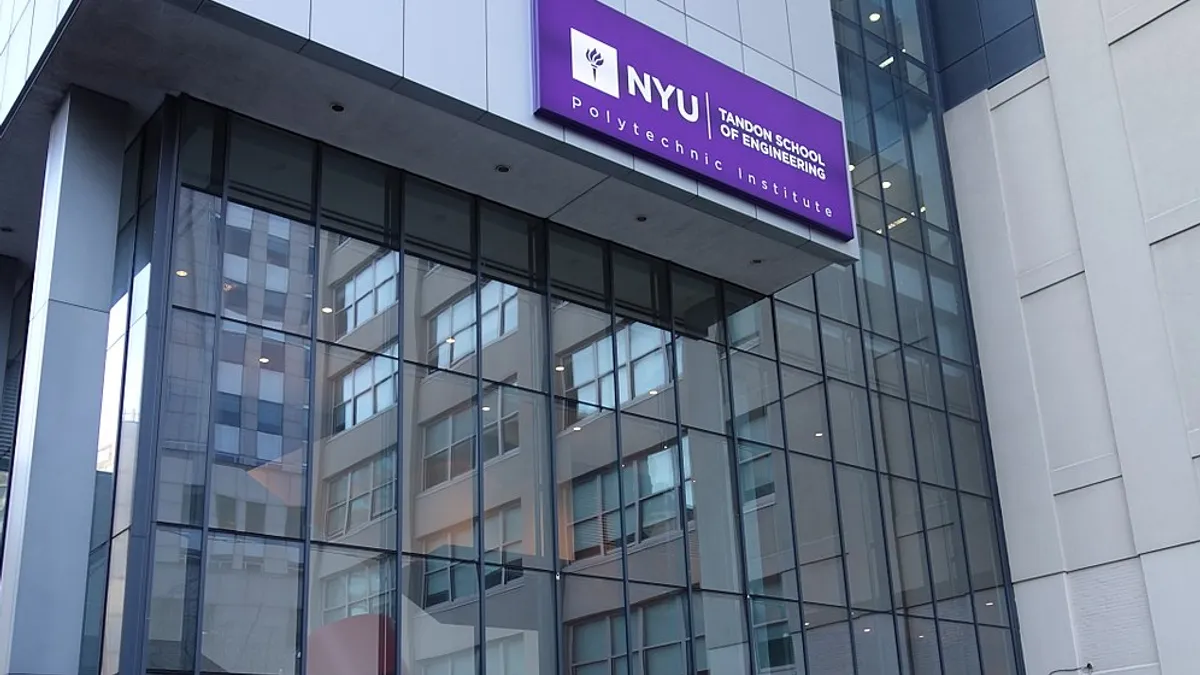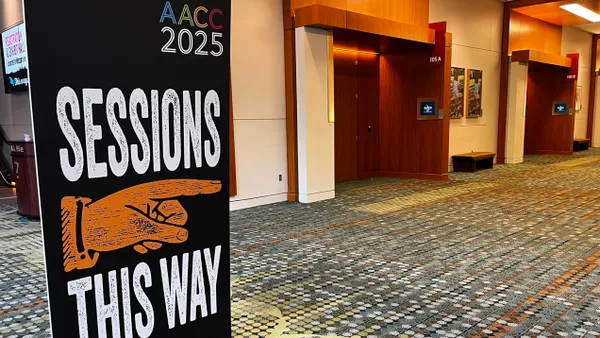Dive Brief:
- New York University's Tandon School of Engineering is creating a center to promote efficiency, sustainability and safety in the construction industry. It will also collaborate with industry executives to find solutions to the issues that can make a project late or over budget.
- Staff and researchers at the Institute of Design and Construction (IDC) Innovations Hub, which is described as "an industry-supported, membership-based entity," will help members solve design and construction issues; provide experts for consultations; offer training and seminars on topics ranging from leadership to material selection; and serve as a national clearinghouse for information on consulting and construction opportunities.
- Michael Horodniceanu, who last served as president of New York City's Metropolitan Transportation Authority Capital Construction, will lead the IDC Innovations Hub.
Dive Insight:
The implementation of new technology will likely factor into the relationships forged at IDC. As an industry, construction has been slow to take up new technology. That's changing in part from collaborations between higher ed and the private sector that are designed to explore and support the use of new materials, systems and workflows.
One such effort comes from Georgia Tech. Launched in 2009, its interdisciplinary Digital Building Laboratory (DBL) connects academic departments (including architecture, civil engineering and computing) with relevant areas of industry (such as construction firms, government and trade groups) to explore new design and construction technologies and workflows.
DBL's research covers topics the industry deals with on a daily basis such as advancing fabrication and automation, and developing smart buildings and systems.
On the private-sector side, Oracle Construction and Engineering launched an innovation lab near Chicago where visitors can try out connected devices, autonomous vehicles, drones, augmented reality and artificial intelligence (AI) gadgets. And in Boston, construction software firm Autodesk offers its BUILD Space (Building, Innovation, Learning and Design). There, architecture, engineering and construction (AEC) firms, as well as students and researchers from colleges and universities, can experiment with high-tech processes and equipment in a 34,000-square-foot lab.
One reason for the emergence of these workspaces is that AEC firms are no longer staying in their own lanes. Instead, they are overlapping by merging design and construction responsibilities or integrating a specialty such as sustainability that would have previously been the job of a separate firm. That's raising the need for opportunities to collaborate and innovate, Dennis Shelden, director of Georgia Tech's lab, told The Architect's Newspaper, an industry publication
In its latest look at construction technology, McKinsey & Company identified several areas for growth. They include 3D printing, drones for inspections, laser scanning, AI and supply chain optimization.














